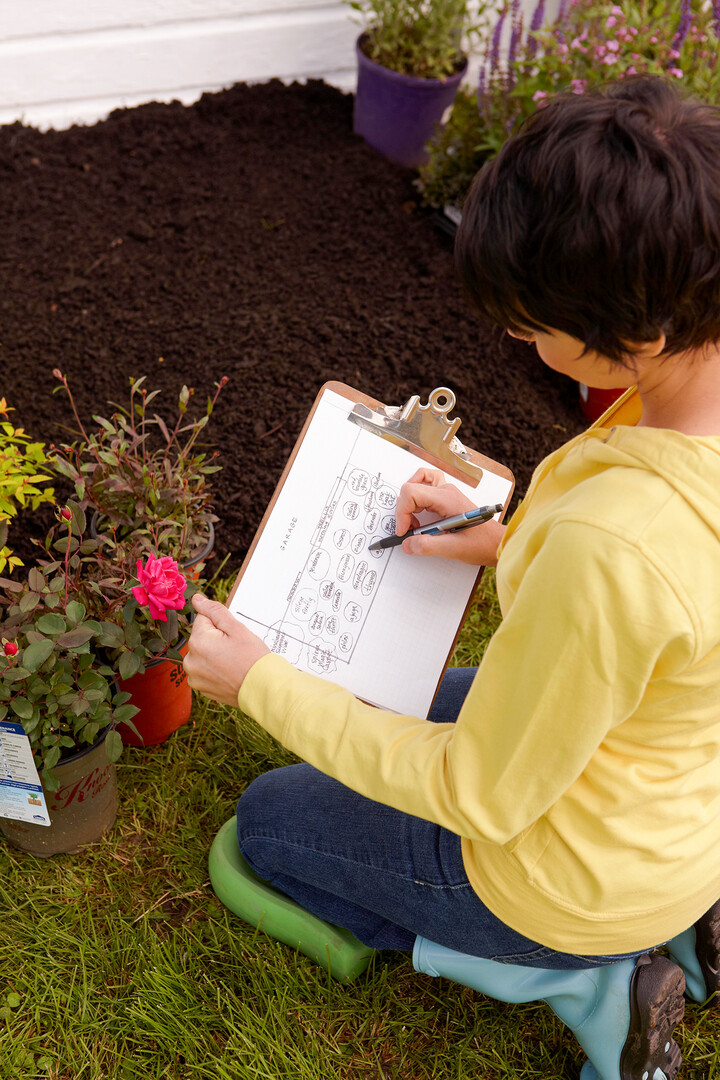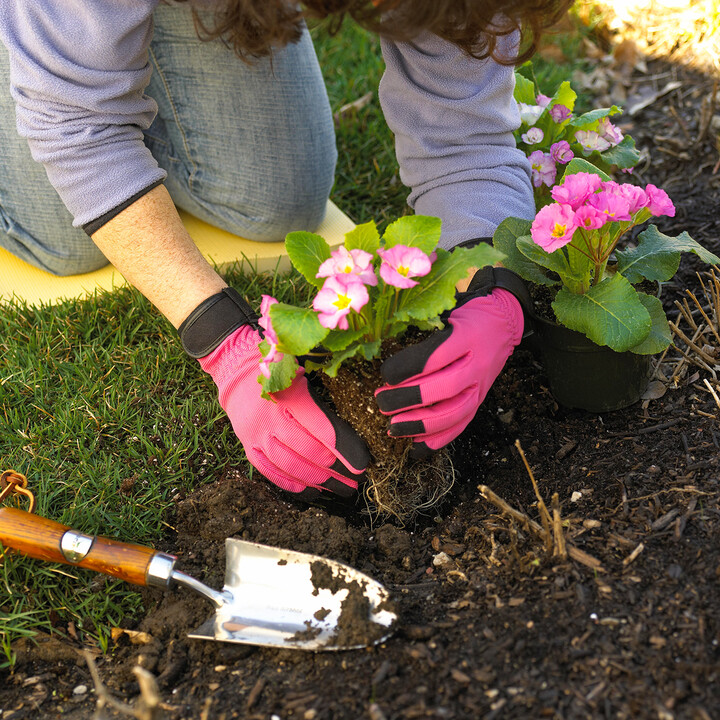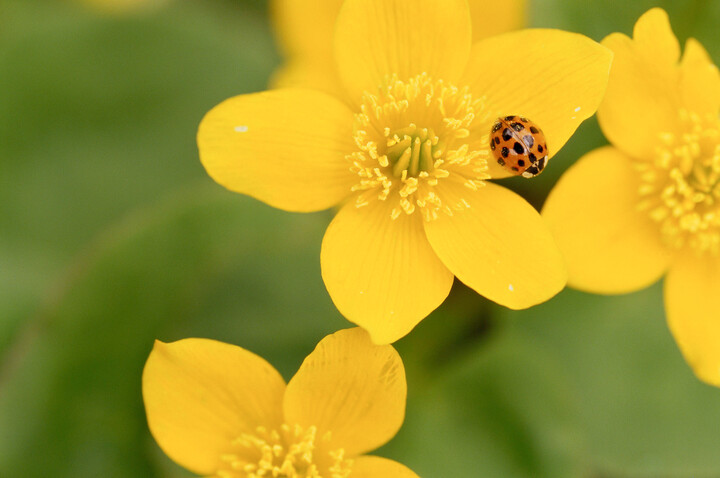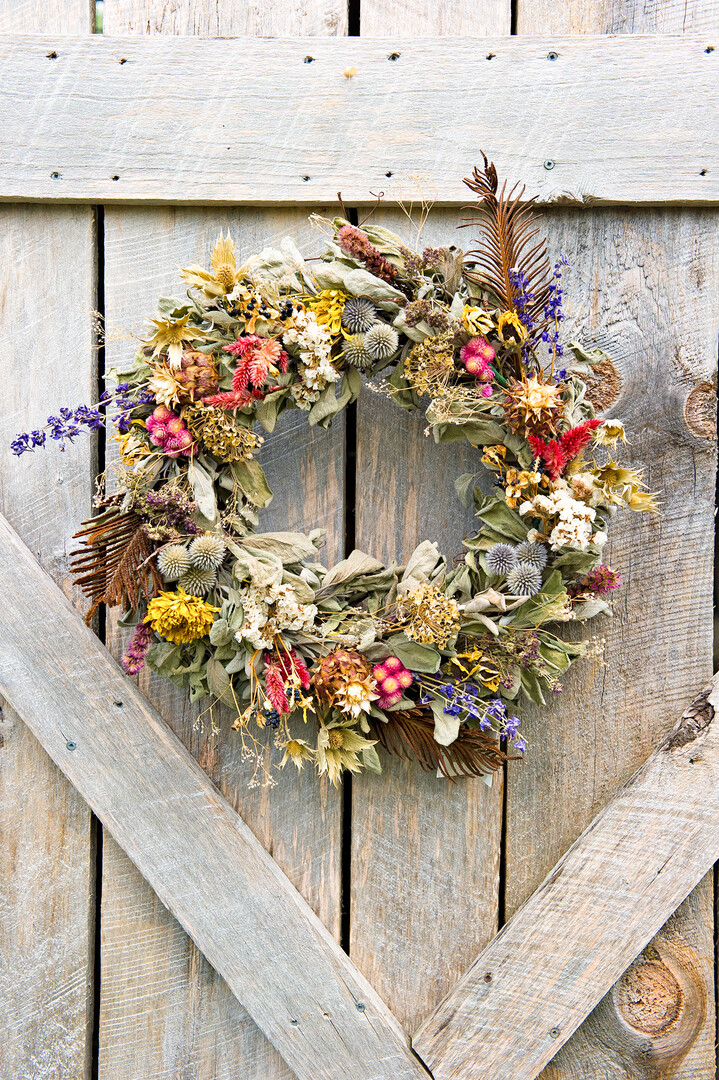Conventional gardening practices result in flower gardens that look good but can take a toll on our environmental health because of the reliance on synthetic pesticides, fungicides, herbicides, and soil-altering chemical fertilizers. The good news? You can have an organic flower garden that is lush and improves the environment. Organic gardening with flowers transforms a yard with its beauty. Here are some tips and organic gardening basics.

Prepare the Planting Area
Healthy soil is alive with an incredible population of microorganisms. Some harm will come to some of those organisms when you dig a garden bed. An easy way to amend your bed with organic matter is to pile it up in the fall and let it rot over winter.
Or consider the no-till method of lasagna gardening. Start with a base layer of cardboard or newspapers that break down to smother any grass and weeds. Water the base. Then alternate 3-inch layers of nitrogen-rich and carbon-rich materials, ending with a layer of carbon materials to discourage flies that might be attracted to the nitrogen materials.
Nitrogen-rich ingredients include grass clippings, aged manure, coffee grounds, and vegetable scraps such as peelings, eggshells, teabags, etc. Carbon-rich ingredients are dry things such as wood chips, leaves, straw, sawdust, newspaper, peat moss, and pine needles. The pile should be 18 inches to 3 feet tall; the taller it is, the longer it will take to breakdown. (the pile will shrink as it decomposes.) Water again and leave it to breakdown over winter.
If you want or need to start your garden bed immediately, add compost to your garden bed and work it into the soil with a spade or, if your garden is large, a rototiller.
Related: How to Start an Organic Vegetable Garden
Sun/Shade Levels
Next, plant flowers so that their light needs get met. It sounds simple, but many gardeners break this rule. There are many ways to assess your planting area. Here are two steps you can't skip:
Determine how many hours of sun your planting area gets per day. Then go online to research which plants will thrive in those conditions. Plants that like full sun will need 6 to 8 hours of sun per day. Plants that prefer part sun may thrive in 4 to 6 hours of sun; part-shade plants will do well in a bit fewer hours or in filtered sun. Other plants prefer full shade.

Strategically Plan How Your Garden Will Look
Decide if you want your flower garden to be formal with symmetrical groupings of plants in neat and tidy plots. Although beautiful, this structured look requires regular maintenance.
Or perhaps you would prefer a natural-looking, asymmetrical plan where different plants have a random, free-flowing look. This casual aesthetic can be a bit less work and may have a more beneficial impact on the environment if you let flowering plants reseed as a food source for birds. However, letting plants freely reseed may result in plants where you didn't intend them. But relax, sit back, and enjoy the show.
Related: Free Plan-a-Garden Tool
Plan for Continuous Blooms
When selecting flowering plants, include plants that blossom spring through fall. You will enjoy the flowers throughout the season, and pollinators will benefit from a continual floral buffet.
For visual interest, create a walkway or path of stepping-stones in a meandering route throughout your garden flower bed. So they are easy to see and appreciate, place shorter plants along the edge of your bed and walkway. From there, gradually increase the height of the plants, with the tallest plants at the back of the bed.

Planting Your Organic Flower Garden
If your soil is rich and you plant the correct plants for your garden conditions, you don't have to worry about using lots of fertilizers and soil amendments in your organic flower garden. An occasional application of compost is all the organic fertilizer you’ll need to keep soil biology thriving, which, in turn, helps keep plants thriving. Commercial organic fertilizers are available at online and at garden centers too.
Seeds or Transplants?
It doesn’t matter if you plant your organic flower garden from seeds or transplants.
Seeds will be cheaper but require a bit more work and time. Choose non-GMO seeds that are certified as organic. Give a big thumbs-up to flowering perennials that have evolved in your area because they will be well-adapted to your planting Zone and support your ecosystem. Check out your local farmers market for seeds. Native seeds can be found online.
Although transplants offer immediate gardening gratification, oftentimes it can be difficult to find ones certified as organic because they cost more for growers to produce and certification is expensive. Ask your local nursery or garden center for organic plants—gardeners’ requests will increase supply. Be prepared to pay more for organic flowering plants, knowing they are worth the extra cost.
Some flowering plants, like those found in prairies, actually dislike fertile soil and will flop if the soil is too rich. So you have to know what you have. A soil test will tell you what type of soil you have and if the soil has significant deficiencies or imbalances that require an amendment. If needed, choose organic fertilizers and organic amendments instead of fertilizers with synthetic chemicals that can be detrimental to your organic garden.

Organic Pest Control
A healthy organic garden has a robust population of insects—most of which are beneficial. It is estimated that 10 percent or fewer of the insects in most gardens are harmful pests. Such a small problem doesn’t require resorting to dangerous synthetic pesticides. They should never be used in an organic garden; however, even some organic pesticides can actually be quite harmful to bees. Be sure to read the label before using even an organic pesticide in your organic garden.
And start by determining if you really have a pest problem. That damage you see might simply be a monarch caterpillar eating the leaf of a milkweed plant—the food it needs to become an adult butterfly.
If you do have a pest problem, try to keep pests in check naturally and organically by attracting and supporting the beneficial insects that prey on them. "Natural enemies" like ladybugs, predatory wasps, lacewings, and assassin bugs are nature's pest control. Provide them with the plants they love, such as yarrow, goldenrod, sunflower, and golden Alexander.

Enjoy your organic flower garden even in the winter by creating dried floral arrangements. Include dried lavender, chamomile, globe amaranth, or roses. Or shop your local farmers market—they’re usually a treasure trove of fresh and dried bouquets and wreaths. Generally, they are made from flowers indigenous to your area like dried sunflowers, anise hyssop, bee balms, and yarrow.